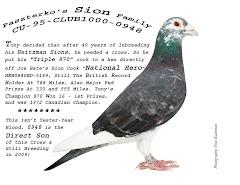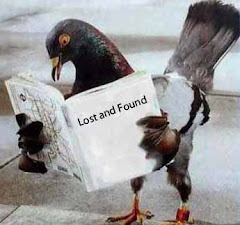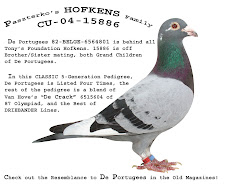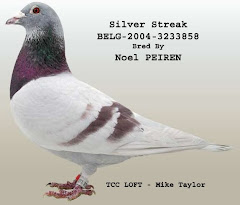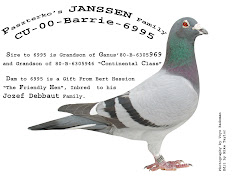By Bob Crandall
Published July-August 1972 Issue
American Racing Pigeon News
In my striping years (as now) I was extremely sensitive about my lack of knowledge concerning pigeons. To hide this lack, I was most studious in aping my seniors in the sport, always being so very careful to duplicate each action I observed. They felt for muscle; I felt for muscle. They examined the wing and so did I. Although I knew nothing about eye sign, I was careful to give this feature its due so as to be very sure that there were neither more nor less of these vital organs that might be expected. Now, one of the gestures I constantly observed I didn't understand at all, (although I was most careful to duplicate the action I saw). I refer to a step in the bird inspection ritual of so many old time flyer's, that of lifting one wing and peering intently beneath it. They did it - so did I. To have done otherwise would have made me suspect, a callow youth, unworthy of the company I wished so desperately to keep.
I may have fooled some of my associates of those early days, but I didn't for a moment fool the late Adolph Van Houtte. "Do you know what you're looking for kid?" he asked one day when it came my turn to inspect one of his champions. Shamefaced, I confessed that I did not. With this he took the bird I was handling, lifted its wing and directed my attention to three very short and very square-tipped feathers growing out of the bird's body at the base of its wing. "According to the 'experts,' the shorter and more square-tipped these three feathers, the better the bird is supposed to be," I was told. He then went on to point out that more than three feathers might well be found in this cluster, but that only the larger three would "count." Having made sure that I had absorbed this new knowledge, he drew me close and whispered that now he was going to show me a far better way of picking out a good pigeon. I am sure that I expected some privileged and very useful information - and quite possibly I received just that. Continuing in a conspiratorial tone, he told me, "Always look at the year on the bird's band. The older it is, the better its chances of being a good one!" What matter Dolph's laughter at my expense - I at long last knew the secret of the greats! And if you didn't know before, good reader, you do know now.
Try the three feather test on your own flock and you'll surely find that the known good ones will have three very short, very broad and very "chopped off" looking feathers at the location described. When you find this feature on a young bird (which you rarely will) I'd be willing to bet a year's free supply of eel eyes and bat wings from my bag of nostrums that you're looking at a future good one. Sounds silly? Of course it's silly, but that's the way it seems to work.
A pigeon flyer of no little renown once offered what may be a satisfactory explanation for the "square feather-good bird" correlation that seems to exist. He had noticed (he said) that the more intensely inbred the subject, the slimmer and more pointed would these three feathers be. He saw this as a clear sign of diminishing vigor and when he found these feathers becoming too narrow in his own inbred flock, he know that it was time to begin looking for a suitable outcross.
Seeming to bear out this "vigor" thesis most of the Trentons that have come my way in recent times have been from intensely inbred families. All have had slim. "spikey" feathers at this location and to be bluntly honest, none have raced satisfactory. However, when crossed into my own line bred family, the result has been the "chopped" feathers that all right-thinking fanciers desire - and suitable race day performance!
Still, if this "vigor" thesis be true, how would one go about explaining a man who has become a legend in his own time? I refer to one Jerry McBride of Seattle, whose inbred family has for some 40-odd years been a-building. Most of the McBride birds I have inspected would flunk the "vigor" test by reason of long, slim under-the-wing feathers and yet, year in and year out, these self-same birds continue to wipe out all comers on race day.
So? The next time you see a fellow fancier peering intently behind a pigeon's wing, you'll at least know what he's up to. Just a word of caution here - smile if you will, but don't laugh aloud! Some of we more dedicated fanciers take the matter of the three feather test for bird quality very seriously indeed.







